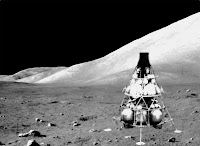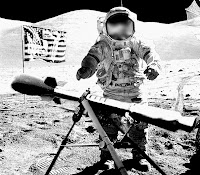captainjack
SOC-13
1953: Project Prometheus and Operation Fleaflicker
The war has been stalemated since the soviet thrust across the Rhine was cut off and destroyed in 1950. Vast air attacks on the UK have consistently kept it unusable as a base for long range strikes on the Soviet homeland. Mass B-29/50 raids from southern France or Iceland have been consistently unable to penetrate past Poland or the east Baltic sea without destruction. Leningrad was damaged by Atomic weaponry at the cost of 70% of the strike aircraft in the most successful such raid. The Mig-15 has proven to be a terrifying air defense fighter against unescorted bombers, even the new B-36 - of which half were lost in the Leningrad raid.
Germany and Poland have absorbed dozens, perhaps a hundred nuclear strikes from small dirty tactical strikes up thru the 50kt Nagasaki busters. East and west line up on opposite sides of the Rhine, keeping dispersed and dug in against tactical strikes. R-1 and the new R-2 rockets occasionally bombard eastern France and Southwest UK with Diebner bombs and radiological weapons. Both homelands are locked into fortress economies, currently safe from attack, but surrounded by devastated allies.
Nov 7, 1953, Cold Lake USAFB, Alberta, Canada: Project Prometheus.
Seven orbital Bombers designed by Eugene Sanger from his original Silbervogel Antipodal bomber scream into the air at the end of 10,000 foot long rail tracks. Launched in three waves, the bombers carry seven Atomic bombs, three of the now all-too-common fat man design, four carrying Super Oralloy Weapons estimated at a half megaton each - an order of magnitude more the the fat man bombs.
One of the rail boosters of the second wave explodes at separation, destroying Prometheus 5 and it's launch track; the remaining two rails launch the final bombers successfully. Two of the remaining six break up and are destroyed as they begin skipping off of the atmosphere. All will be destroyed during final re-entry, but four will deliver their bombs first: two superbombs on Moscow; two fat man bombs on command and control sites in the heartland of Russia. The capital is pulverized, and amidst the hundreds of thousands of casualties, two key ones are included: Stalin and Beria. As well, Molotov, Malenkov, Bulganin, most of Presidium and Stavka command including Zhukov. The Soviet military and government is effectively decapitated; even more, news of Stalin and Beria's death creates a growing power struggle among the few survivors, paralyzing the response.
Operation Fleaflicker
As the strikes in Russia are confirmed, the remaining long-range bomber and Ficon squadrons launch from the newly built Frobishers bay AFB, passing over the ruins of Thule on their way to Russia. Soviet air defense is hampered but not crippled as expected; few bombers ever make it to targets. The survivors will land, ditch or bail out across northern Canada, Greenland and Scandanavia; it is effectively the death of the western strategic bombing force. However, despite this failure, as the bombers and their fighters are attacking soviet airspace, NATO commits all remaining ground force reserves in what is to be the last, desperate offensive of WWIII. Widely dispersed NATO forces cross the Rhine; winter slows down the attacking forces and burdens supply, but gives tactical surprise, and, along with the sacrifice of SAC and Bomber command, removes the specter of nuclear air attacks from the equation.
Within three brutal weeks, NATO forces are at the Wesser and the Main, and the uneasy alliance that currently ruled the USSR (Nikita Kruschev, and the only surviving Marshals Ivan Konev and Vasily Sokolosky) requests a cease-fire. With logistical support failing across the blasted German battlefield, NATO, quite literally on its last legs, desperately grabs the olive branch, accepting what will be an indefinite armistice. Germany between the Wesser and the Oder becomes the northern region of a DMZ that will stretch to the Adriatic. The troops remain on the lines, and will for the next thirty years; at least the wounded will be home by Christmas.
Next....so how does this get us into space ?
The war has been stalemated since the soviet thrust across the Rhine was cut off and destroyed in 1950. Vast air attacks on the UK have consistently kept it unusable as a base for long range strikes on the Soviet homeland. Mass B-29/50 raids from southern France or Iceland have been consistently unable to penetrate past Poland or the east Baltic sea without destruction. Leningrad was damaged by Atomic weaponry at the cost of 70% of the strike aircraft in the most successful such raid. The Mig-15 has proven to be a terrifying air defense fighter against unescorted bombers, even the new B-36 - of which half were lost in the Leningrad raid.
Germany and Poland have absorbed dozens, perhaps a hundred nuclear strikes from small dirty tactical strikes up thru the 50kt Nagasaki busters. East and west line up on opposite sides of the Rhine, keeping dispersed and dug in against tactical strikes. R-1 and the new R-2 rockets occasionally bombard eastern France and Southwest UK with Diebner bombs and radiological weapons. Both homelands are locked into fortress economies, currently safe from attack, but surrounded by devastated allies.
Nov 7, 1953, Cold Lake USAFB, Alberta, Canada: Project Prometheus.
Seven orbital Bombers designed by Eugene Sanger from his original Silbervogel Antipodal bomber scream into the air at the end of 10,000 foot long rail tracks. Launched in three waves, the bombers carry seven Atomic bombs, three of the now all-too-common fat man design, four carrying Super Oralloy Weapons estimated at a half megaton each - an order of magnitude more the the fat man bombs.
One of the rail boosters of the second wave explodes at separation, destroying Prometheus 5 and it's launch track; the remaining two rails launch the final bombers successfully. Two of the remaining six break up and are destroyed as they begin skipping off of the atmosphere. All will be destroyed during final re-entry, but four will deliver their bombs first: two superbombs on Moscow; two fat man bombs on command and control sites in the heartland of Russia. The capital is pulverized, and amidst the hundreds of thousands of casualties, two key ones are included: Stalin and Beria. As well, Molotov, Malenkov, Bulganin, most of Presidium and Stavka command including Zhukov. The Soviet military and government is effectively decapitated; even more, news of Stalin and Beria's death creates a growing power struggle among the few survivors, paralyzing the response.
Operation Fleaflicker
As the strikes in Russia are confirmed, the remaining long-range bomber and Ficon squadrons launch from the newly built Frobishers bay AFB, passing over the ruins of Thule on their way to Russia. Soviet air defense is hampered but not crippled as expected; few bombers ever make it to targets. The survivors will land, ditch or bail out across northern Canada, Greenland and Scandanavia; it is effectively the death of the western strategic bombing force. However, despite this failure, as the bombers and their fighters are attacking soviet airspace, NATO commits all remaining ground force reserves in what is to be the last, desperate offensive of WWIII. Widely dispersed NATO forces cross the Rhine; winter slows down the attacking forces and burdens supply, but gives tactical surprise, and, along with the sacrifice of SAC and Bomber command, removes the specter of nuclear air attacks from the equation.
Within three brutal weeks, NATO forces are at the Wesser and the Main, and the uneasy alliance that currently ruled the USSR (Nikita Kruschev, and the only surviving Marshals Ivan Konev and Vasily Sokolosky) requests a cease-fire. With logistical support failing across the blasted German battlefield, NATO, quite literally on its last legs, desperately grabs the olive branch, accepting what will be an indefinite armistice. Germany between the Wesser and the Oder becomes the northern region of a DMZ that will stretch to the Adriatic. The troops remain on the lines, and will for the next thirty years; at least the wounded will be home by Christmas.
Next....so how does this get us into space ?
Last edited:


